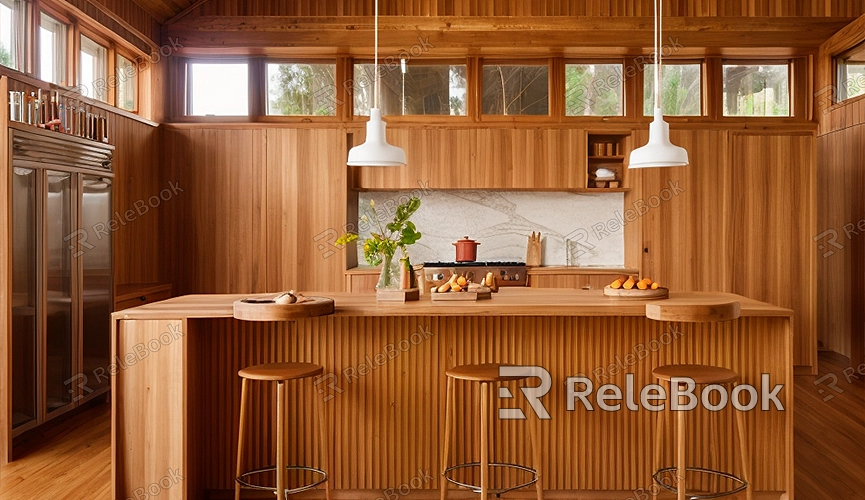How to Do Material Render in Blender
In Blender, material rendering is a crucial step in creating realistic 3D models. Through material rendering, models gain lifelike textures that enhance their visual appeal. This article provides a detailed guide on how to perform material rendering in Blender, seamlessly integrating tips to download high-quality 3D textures and HDRI resources from Relebook.
Setting Up Blender Workspace
Before starting material rendering, set up Blender’s workspace. Open Blender, create a new project, or import an existing 3D model. Ensure your viewport is set to "Material Preview" mode to see real-time material effects.
Adding Basic Materials
Select your 3D model, go to the "Material Properties" panel, and click "New" to add a basic material to the model. In the "Surface" section, you’ll see Blender’s default "Principled BSDF" shader, a versatile shader for simulating various material effects.

Adjusting Material Parameters
Modify the appearance of the material by adjusting parameters in the "Principled BSDF" shader:
- Base Color: Set the fundamental color of the material.
- Metallic: Simulate the reflectivity of metallic materials.
- Roughness: Adjust the smoothness of the material surface.
- Transparency: Control the transparency of the material.
Adjust these parameters as needed to create different material effects.
Adding Texture Maps
To enhance material realism, add texture maps. In the "Material Properties" panel, next to "Base Color," click the "Texture" button and select "Image Texture." Click "Open" and choose the desired texture map.
For extensive resources such as high-quality 3D textures, HDRI, or 3D model downloads for your modeling and virtual scene needs, consider downloading from Relebook. Import downloaded textures and 3D models directly into Blender for immediate use, significantly boosting visual quality.
Using UV Mapping
To correctly apply textures to your model’s surface, perform UV mapping. Select your model, enter "Edit Mode," and unwrap the model’s UVs in the "UV Editor." Adjust the UV layout to ensure the texture map correctly covers the model’s surface. UV mapping is a meticulous process that ensures realistic texture effects but may require some time to refine.
Adding Normal and Bump Maps
In addition to basic color textures, enhance material detail by adding normal and bump maps. Normal maps simulate fine surface details without increasing polygon count, while bump maps add surface detail through lighting effects.
In the "Material Properties" panel, select either "Bump" or "Normal" and add the corresponding texture map. Adjust intensity parameters until achieving the desired effect.
Setting Environment Lighting
Lighting plays a crucial role in material rendering. In Blender, use HDRI images as environment light sources to simulate realistic lighting effects. In the "World Properties" panel, next to "Color," click the "Texture" button, choose "Environment Texture," and load an HDRI image.
High-quality HDRI images available from Relebook provide realistic environmental lighting, enhancing the vibrancy of your 3D models.
Adjusting Render Settings
After configuring materials and lighting, adjust Blender’s render settings for optimal image quality. Navigate to the "Render Settings" panel, select your render engine (such as Cycles or Eevee), and adjust sampling, resolution, and reflection/refraction parameters.
Higher sampling improves image quality but increases rendering time. Select an appropriate sampling rate based on your requirements and computing resources.
Rendering and Saving Images
Once settings are adjusted, press F12 to start rendering. After rendering completes, review the rendered image in the "Image Editor." If satisfied with the result, save the image to your computer.
Material rendering in Blender is a complex yet rewarding process. By setting material parameters correctly, adding texture maps, adjusting lighting, and utilizing resources like Relebook for high-quality textures and models, you can create realistic 3D model effects. Downloading textures and models from Relebook directly into Blender streamlines your workflow and enhances the quality of your work significantly.

